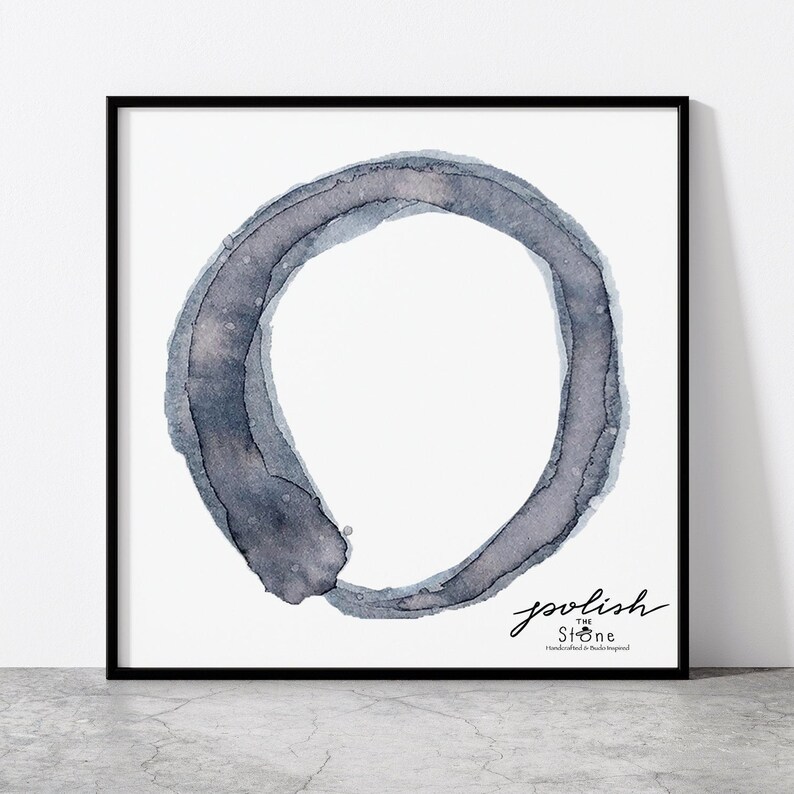

A Zen monk is called an ‘Unsui’, literally ‘Cloud-Water’, someone whoseĪctivity is unified with nature, to float like a cloud and flow like water. ‘Enso Zen’ could also be termed ‘ Wabi sabi Zen’ or the ‘Zen of the Natural
Enso circle how to#
How to drink this cup of tea with undistracted, seamless unity of ourĪwareness tea, awareness and drinking tea as one act.Įngaging this seamless practice, moment after moment in our daily life is Zen. This is not a theoretical idea or abstraction but placing our attention 100% in this present moment Us to ‘eat this’ the Enso, the ultimate Zero of ( shunyata) emptiness. So, the reality is placed in front of us and invitation is offered for The Zen monk/artist of the late 18th century, Sengai, fills his Enso drawing SheĪnticipated 21st century theoretical physics, by initiating the idea of a ‘Zero point’ or boundlessĬircle a fulcrum point, intrinsic to the universe itself. Of a ‘boundless principle’ which bridges the ideological gap between East and West. In the late nineteenth century, theosophic mystic, Helena Blavatsky, through her ‘transmural view’ “God is that circle whose center is everywhere and circumference nowhere”. 21) Later, theįrench 17th century Philosopher Blaise Pascal would intuitively echo theīuddhist idea in his rationalistic theology: “God is an infinite circle…an infinite sphere.” ( On Learned Ignorance ch. “…the likening of an infinite circle to oneness.” In the European West, the 15th century philosopher and mystic, Nicholas de Cusa Would use the image of ‘round and perfect’ equating to ‘great space’ in speaking of the ultimate The 6th century Hsin Hsin Ming authored by the 3rd Great Ch’an/Zen Ancestor, Seng T’san, The same is true for all the skandas: form, feeling, thought, volition, discernment That which is form is emptiness, and that which is emptiness is form.

The prajna paramita/ heart sutra describes this paradoxical view:įorm is emptiness (sunyata), emptiness is form įorm is no other than emptiness, emptiness no other than form Paradoxical idea of Emptiness or Sunyata - the ‘empty’ ( sunya) that is completely ‘full’ This later evolved into the circle or Sunya and then to the Buddhist Of zero was represented by the bindu or dot, the intrinsic spirit-life seed within all The historical roots go back to India, where the initial concept In Zen culture that developed in Japan the use of the Enso in art andĬalligraphy is pervasive, where the Enso circle is the most popular ofĬalligraphies.


 0 kommentar(er)
0 kommentar(er)
